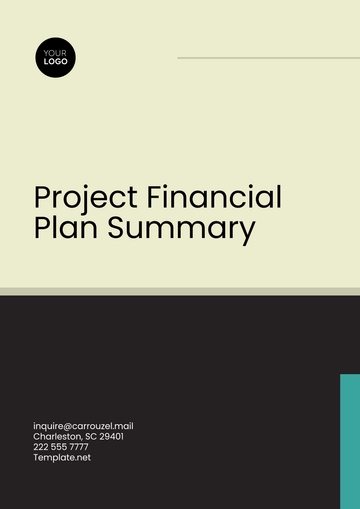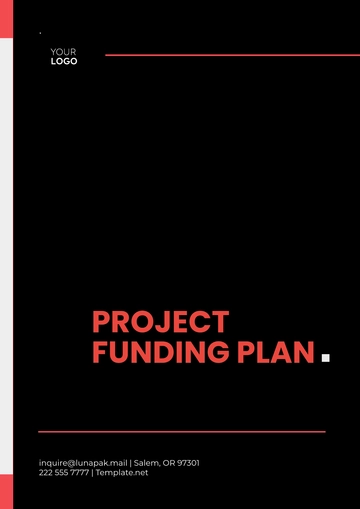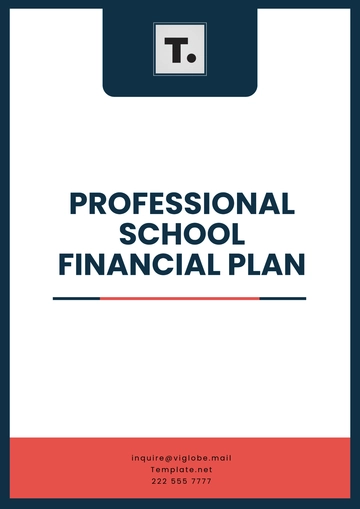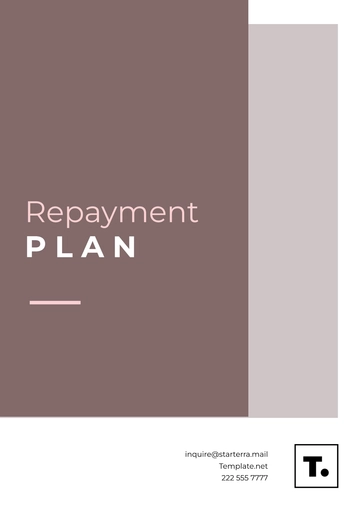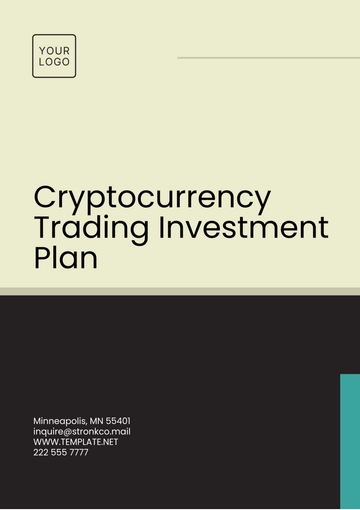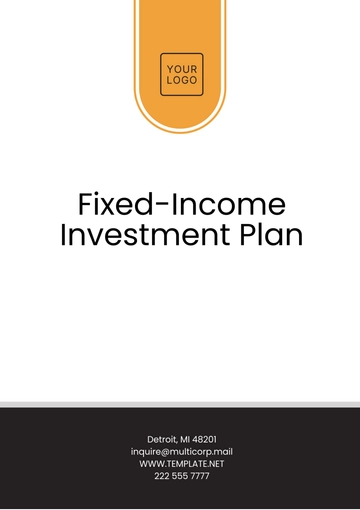Free Long-Term Financial Reporting Plan
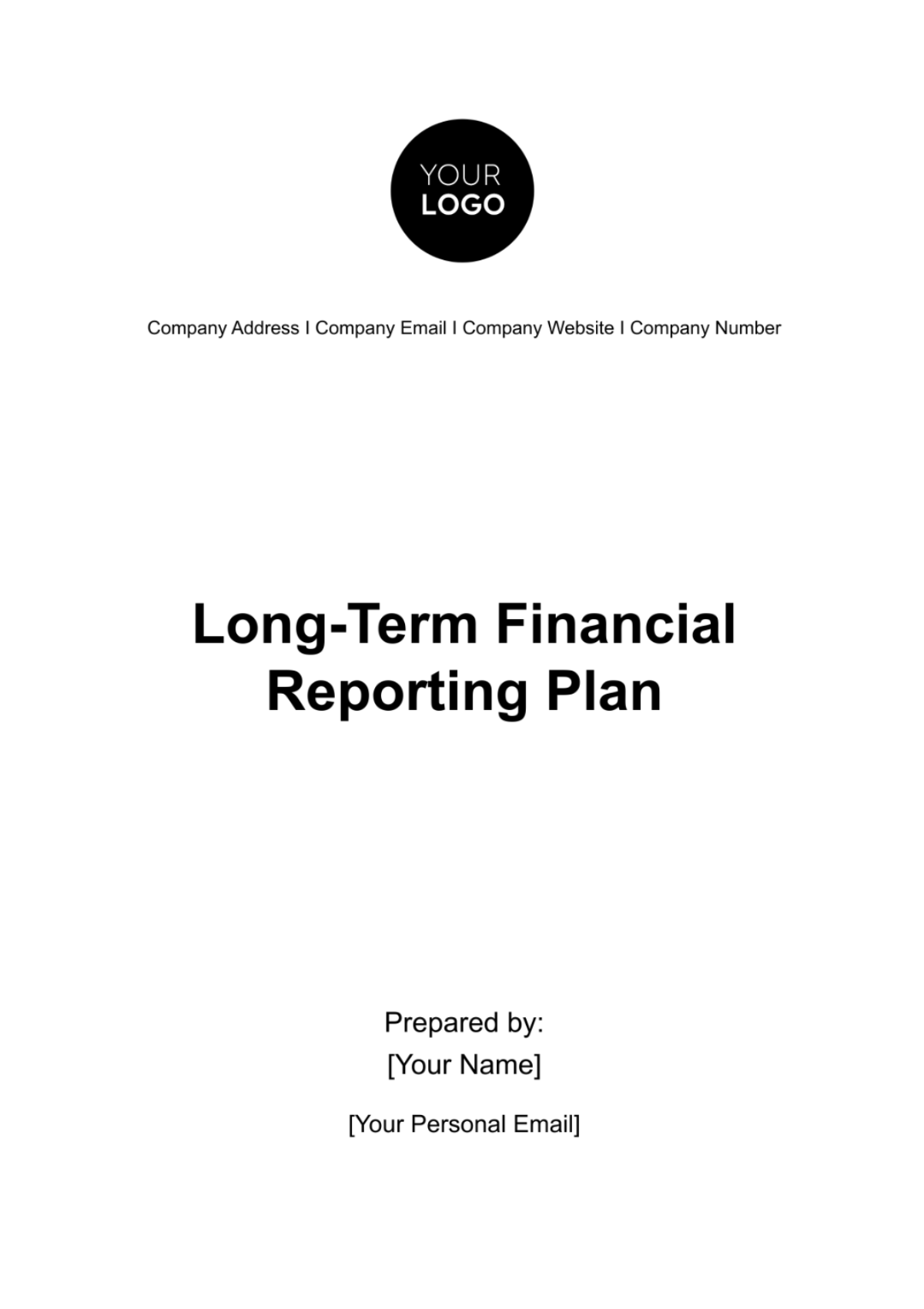
I. Executive Summary
Overview:
As [Your Company Name], we recognize the critical role of transparent financial reporting in fostering stakeholder trust and supporting informed decision-making. This Long-Term Financial Reporting Plan reflects our dedication to upholding the highest standards of financial integrity.
By establishing clear objectives and goals, we aim to provide stakeholders with a comprehensive understanding of our financial performance, position, and strategic direction over the long term. Through this plan, we commit to delivering accurate, timely, and reliable financial information, reinforcing our commitment to transparency and accountability.
Key Objectives and Goals:
Our primary objectives include maintaining the consistency and quality of financial reporting, enhancing the accessibility of financial information to stakeholders, and ensuring compliance with applicable accounting standards and regulations.
We also aim to strengthen investor confidence by offering a clear and insightful portrayal of our financial health and strategic initiatives. This plan serves as a roadmap for the organization, aligning financial reporting practices with our overarching corporate goals and values.
II. Introduction:
Purpose:
The purpose of this Financial Reporting Plan is to provide a comprehensive and consistent framework for the presentation of financial information. By outlining our commitment to accuracy, adherence to accounting standards, and effective communication, this plan underscores our dedication to maintaining the trust of investors, creditors, regulators, and the wider public. The plan serves as a guiding document, ensuring that our financial reporting practices align with industry best practices and regulatory requirements.
III. Financial Statements:
Types of Financial Statements:
Financial Statement | Content and Purpose |
|---|---|
Balance Sheet | Presents assets, liabilities, and equity, providing a snapshot of the company's financial position at a specific point in time. |
Income Statement | Summarizes revenues, costs, and expenses over a specific period, resulting in net income or loss, highlighting the company's profitability. |
Cash Flow Statement | Outlines the sources and uses of cash, categorizing operating, investing, and financing activities to assess the company's liquidity and cash flow trends. |
Frequency and Timing:
Reporting Period | Statement Type |
|---|---|
Quarterly | Unaudited Financial Statements (Balance Sheet, Income Statement, Cash Flow Statement) |
Annually | Audited Financial Statements (External Audit) |
Currency and Measurement Units:
All financial statements will be presented in USD (United States Dollar), and measurements will be in accordance with International Financial Reporting Standards (IFRS).
IV. Accounting Policies:
Overview of Accounting Principles:
Our accounting practices are guided by fundamental principles ensuring accuracy and consistency. The following table provides an overview of key accounting policies:
Changes in Accounting Policies and Practices:
Changes in accounting policies will be communicated in the notes to the financial statements, with details on the nature of the change, reasons for the change, and the expected impact on financial results.
V. Disclosure Practices:
Transparency and Materiality:
Transparency is a cornerstone of our disclosure practices. Materiality assessments will guide the inclusion of relevant information, ensuring that our financial statements provide a clear and accurate representation of the company's financial health. This commitment extends to both quantitative and qualitative disclosures, allowing stakeholders to make informed decisions.
Overview of Disclosures:
Our financial statements will include detailed disclosures to enhance stakeholders' understanding. These will cover significant accounting policies, enabling users to comprehend the basis of financial statement preparation. Additionally, disclosures related to related-party transactions, contingencies, and commitments will be prominently featured, contributing to a comprehensive and transparent financial narrative.
Segment Reporting:
Recognizing the diverse nature of our business operations, we will adopt segment reporting in our financial statements. This will provide stakeholders with insights into the financial performance and risks associated with different business units and geographical segments. The segmentation approach will align with our internal management structure, enhancing the relevance of financial information for decision-makers.
Contingencies and Commitments:
Our disclosure framework will explicitly address contingencies and commitments. We will disclose details of significant legal matters, pending litigation, and other uncertainties that may impact the company's financial position. Additionally, commitments such as contractual obligations and capital expenditure plans will be transparently communicated to facilitate a thorough assessment by stakeholders.
Risks and Uncertainties:
A dedicated section within our reports will outline key risks and uncertainties that could affect our financial outlook. By identifying and articulating these factors, we aim to provide stakeholders with a comprehensive understanding of the challenges and opportunities inherent in our business environment.
VI. Auditing and Assurance:
External Audit Arrangements:
An independent external audit firm will be engaged annually to perform a thorough examination of our financial statements. The audit scope will cover all material aspects of the financial statements, ensuring compliance with accounting standards and providing stakeholders with assurance regarding the reliability of the reported financial information.
Internal Controls:
Maintaining effective internal controls is paramount to our financial reporting integrity. Our internal audit function will conduct regular assessments to evaluate the effectiveness of internal controls. This ongoing monitoring ensures that any weaknesses identified are promptly addressed, reinforcing the reliability of financial reporting processes.
Handling of Audit Findings:
Upon completion of the external audit, any findings or recommendations will be carefully reviewed. Timely corrective actions will be implemented, and the outcomes will be communicated transparently to stakeholders. This commitment to addressing audit findings underscores our dedication to continuous improvement in financial reporting practices.
VII. Regulatory Compliance:
Applicable Regulations and Standards:
We commit to complying with all relevant financial reporting regulations and adhering to International Financial Reporting Standards (IFRS). Regular internal assessments and external audits will validate our adherence to these standards, ensuring regulatory compliance.
Compliance Monitoring:
Our internal compliance team will conduct periodic reviews to monitor adherence to financial reporting regulations. This proactive approach aims to identify any potential compliance issues early, allowing for swift corrective actions and minimizing risks associated with non-compliance.
Interaction with Regulatory Bodies:
Maintaining open and transparent communication with regulatory bodies is integral to our compliance strategy. We will promptly respond to inquiries, provide required information, and actively engage with regulatory updates to ensure alignment with evolving reporting standards and requirements.
VIII. Communication Strategy:
Stakeholder Communication Plan:
Our stakeholder communication plan aims to address the diverse needs of investors, creditors, regulators, and employees. Through regular updates, earnings releases, and dedicated investor presentations, we seek to provide timely and relevant financial information. This multi-faceted approach ensures that stakeholders can make well-informed decisions based on a comprehensive understanding of our financial performance and strategic initiatives.
Earnings Releases and Investor Presentations:
Earnings releases will be designed to succinctly communicate financial results, key performance indicators, and notable achievements. Investor presentations, whether virtual or in-person, will provide a deeper dive into financial metrics, strategic goals, and opportunities, fostering an interactive dialogue with our investor community.
Annual Reports and Other Communications:
Our annual reports will serve as comprehensive documents summarizing the financial year's performance, key milestones, and future outlook. In addition to traditional print formats, we will explore interactive digital platforms to enhance accessibility and engagement. Adherence to best practices in corporate governance and transparent communication will be central to all our external communications.
IX. Forward-Looking Information:
Financial Forecasting and Projections:
We recognize the importance of providing stakeholders with forward-looking information. Our financial forecasting and projections will be based on rigorous analyses of market trends, operational performance, and economic indicators. Assumptions and methodologies used in these projections will be clearly communicated to ensure transparency.
Assumptions and Methodologies Used:
The basis for our forward-looking information will rest on well-defined assumptions and methodologies. These will encompass factors such as anticipated market conditions, business expansion plans, and macroeconomic variables. Regular reviews and updates will be conducted to reflect changes in the business environment.
Risks Associated with Forward-Looking Information:
Acknowledging the inherent uncertainties in forecasting, our reports will include a dedicated section highlighting the risks associated with forward-looking information. By transparently articulating potential challenges, we aim to provide stakeholders with a balanced perspective for their decision-making processes.
X. Monitoring and Evaluation:
Key Performance Indicators (KPIs):
To assess the effectiveness of our financial reporting, we will establish and monitor key performance indicators (KPIs). These may include the accuracy of financial forecasts, the timeliness of reporting, and stakeholder satisfaction with communication materials. Regular evaluations will guide continuous improvement initiatives.
Continuous Improvement Initiatives:
Feedback from audits, stakeholder interactions, and internal assessments will be used to drive continuous improvement initiatives. This iterative approach ensures that our financial reporting practices remain adaptive and responsive to evolving business needs and stakeholder expectations.
Periodic Review and Updates to the Financial Reporting Plan:
Our Financial Reporting Plan will undergo periodic reviews to align with changes in business operations, regulatory requirements, and industry standards. Updates will be made as necessary, and stakeholders will be informed of any material changes to the plan, fostering transparency and accountability.
- 100% Customizable, free editor
- Access 1 Million+ Templates, photo’s & graphics
- Download or share as a template
- Click and replace photos, graphics, text, backgrounds
- Resize, crop, AI write & more
- Access advanced editor
Discover financial clarity with the Long-Term Financial Reporting Plan Template from Template.net. This editable and customizable template, powered by an intuitive AI Editor Tool, empowers your organization to establish robust reporting policies, streamline auditing procedures, and adapt to evolving standards seamlessly. Elevate transparency and stakeholder trust with this essential tool for strategic financial planning.
You may also like
- Finance Plan
- Construction Plan
- Sales Plan
- Development Plan
- Career Plan
- Budget Plan
- HR Plan
- Education Plan
- Transition Plan
- Work Plan
- Training Plan
- Communication Plan
- Operation Plan
- Health And Safety Plan
- Strategy Plan
- Professional Development Plan
- Advertising Plan
- Risk Management Plan
- Restaurant Plan
- School Plan
- Nursing Home Patient Care Plan
- Nursing Care Plan
- Plan Event
- Startup Plan
- Social Media Plan
- Staffing Plan
- Annual Plan
- Content Plan
- Payment Plan
- Implementation Plan
- Hotel Plan
- Workout Plan
- Accounting Plan
- Campaign Plan
- Essay Plan
- 30 60 90 Day Plan
- Research Plan
- Recruitment Plan
- 90 Day Plan
- Quarterly Plan
- Emergency Plan
- 5 Year Plan
- Gym Plan
- Personal Plan
- IT and Software Plan
- Treatment Plan
- Real Estate Plan
- Law Firm Plan
- Healthcare Plan
- Improvement Plan
- Media Plan
- 5 Year Business Plan
- Learning Plan
- Marketing Campaign Plan
- Travel Agency Plan
- Cleaning Services Plan
- Interior Design Plan
- Performance Plan
- PR Plan
- Birth Plan
- Life Plan
- SEO Plan
- Disaster Recovery Plan
- Continuity Plan
- Launch Plan
- Legal Plan
- Behavior Plan
- Performance Improvement Plan
- Salon Plan
- Security Plan
- Security Management Plan
- Employee Development Plan
- Quality Plan
- Service Improvement Plan
- Growth Plan
- Incident Response Plan
- Basketball Plan
- Emergency Action Plan
- Product Launch Plan
- Spa Plan
- Employee Training Plan
- Data Analysis Plan
- Employee Action Plan
- Territory Plan
- Audit Plan
- Classroom Plan
- Activity Plan
- Parenting Plan
- Care Plan
- Project Execution Plan
- Exercise Plan
- Internship Plan
- Software Development Plan
- Continuous Improvement Plan
- Leave Plan
- 90 Day Sales Plan
- Advertising Agency Plan
- Employee Transition Plan
- Smart Action Plan
- Workplace Safety Plan
- Behavior Change Plan
- Contingency Plan
- Continuity of Operations Plan
- Health Plan
- Quality Control Plan
- Self Plan
- Sports Development Plan
- Change Management Plan
- Ecommerce Plan
- Personal Financial Plan
- Process Improvement Plan
- 30-60-90 Day Sales Plan
- Crisis Management Plan
- Engagement Plan
- Execution Plan
- Pandemic Plan
- Quality Assurance Plan
- Service Continuity Plan
- Agile Project Plan
- Fundraising Plan
- Job Transition Plan
- Asset Maintenance Plan
- Maintenance Plan
- Software Test Plan
- Staff Training and Development Plan
- 3 Year Plan
- Brand Activation Plan
- Release Plan
- Resource Plan
- Risk Mitigation Plan
- Teacher Plan
- 30 60 90 Day Plan for New Manager
- Food Safety Plan
- Food Truck Plan
- Hiring Plan
- Quality Management Plan
- Wellness Plan
- Behavior Intervention Plan
- Bonus Plan
- Investment Plan
- Maternity Leave Plan
- Pandemic Response Plan
- Succession Planning
- Coaching Plan
- Configuration Management Plan
- Remote Work Plan
- Self Care Plan
- Teaching Plan
- 100-Day Plan
- HACCP Plan
- Student Plan
- Sustainability Plan
- 30 60 90 Day Plan for Interview
- Access Plan
- Site Specific Safety Plan

